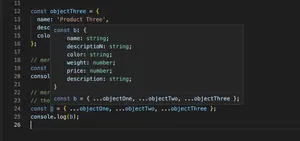Introduction
In the bountiful landscape of web development, checkboxes are akin to the humble nuts and bolts in a grand steamboat’s engine, simple yet crucial in the grand scheme. Accompany them with TypeScript, and a symphony of type-safe interactivity plays out. This voyage explores the melding of HTML checkboxes with TypeScript prowess.
Getting Started
Firstly, ye need to fathom the essence of HTML checkboxes. A checkbox allows users to select one or more options from a set. TypeScript, an able scribe, enhances JavaScript with types and hence, predictability in behavior. Together, they ensure a sturdy, yet flexible user interface component.
<input type="checkbox" id="agree">
<label for="agree">Agree to terms</label>
<script>
function handleCheckboxChange(event: Event) {
const input = event.target as HTMLInputElement;
console.log(input.checked);
}
document.getElementById('agree').addEventListener('change', handleCheckboxChange);
</script>Enhancing Functionality
With the basics anchored, we shall add sails to harness greater winds. It is not uncommon to corral a group of checkboxes to perform as a fleet. TypeScript can help keep track of checked states in a type-safe manner.
interface CheckboxState {
[key: string]: boolean;
}
const checkboxStates: CheckboxState = {};
function handleMultipleCheckboxes(event: Event) {
const input = event.target as HTMLInputElement;
checkboxStates[input.id] = input.checked;
}
// Imagine ye have multiple checkboxes with this 'change' event listener.
State Management with TypeScript
The tide gets stronger as we venture deeper. Seasoned vessels manage state. Here, TypeScript assists in the creation of state management structures that can react to checkbox changes in complex applications.
type CheckboxState = 'checked' | 'unchecked' | 'indeterminate';
class CheckboxManager {
private states: Record<string, CheckboxState> = {};
setCheckboxState(id: string, state: CheckboxState) {
this.states[id] = state;
}
getCheckboxState(id: string): CheckboxState | undefined {
return this.states[id];
}
// ...additional methods...
}Integration with Frameworks and Libraries
Even the mightiest river joins the ocean. Thus, one should be acquainted with how checkboxes and TypeScript blend with frameworks such as Angular, React, or Vue. Here’s how a checkbox’s state might be managed in a React component, using TypeScript:
import React, { useState } from 'react';
const AgreeCheckbox: React.FC = () => {
const [isChecked, setIsChecked] = useState<boolean>(false);
const handleCheckboxChange = (event: React.ChangeEvent<HTMLInputElement>) => {
setIsChecked(event.target.checked);
};
return (
<>
<input
type="checkbox"
id="agree"
checked={isChecked}
onChange={handleCheckboxChange}
/>
<label htmlFor="agree">Agree to terms</label>
</>
);
};
export default AgreeCheckbox;Best Practices
As with shipbuilding, certain best practices ensure smooth sailing. Apply these best practices in using HTML checkboxes with TypeScript such as accessibility consideration, state handling patterns, and type safety assurances.
Conclusion
Therein lies our tale of checkboxes and TypeScript, a journey of both simplicity and complexity. We’ve charted through basic usage to state management and navigated the seas of integration with modern frameworks, all with a steady TypeScript compass. Hoist your sails, dear reader, for your own adventure awaits in the boundless ocean of web development.
